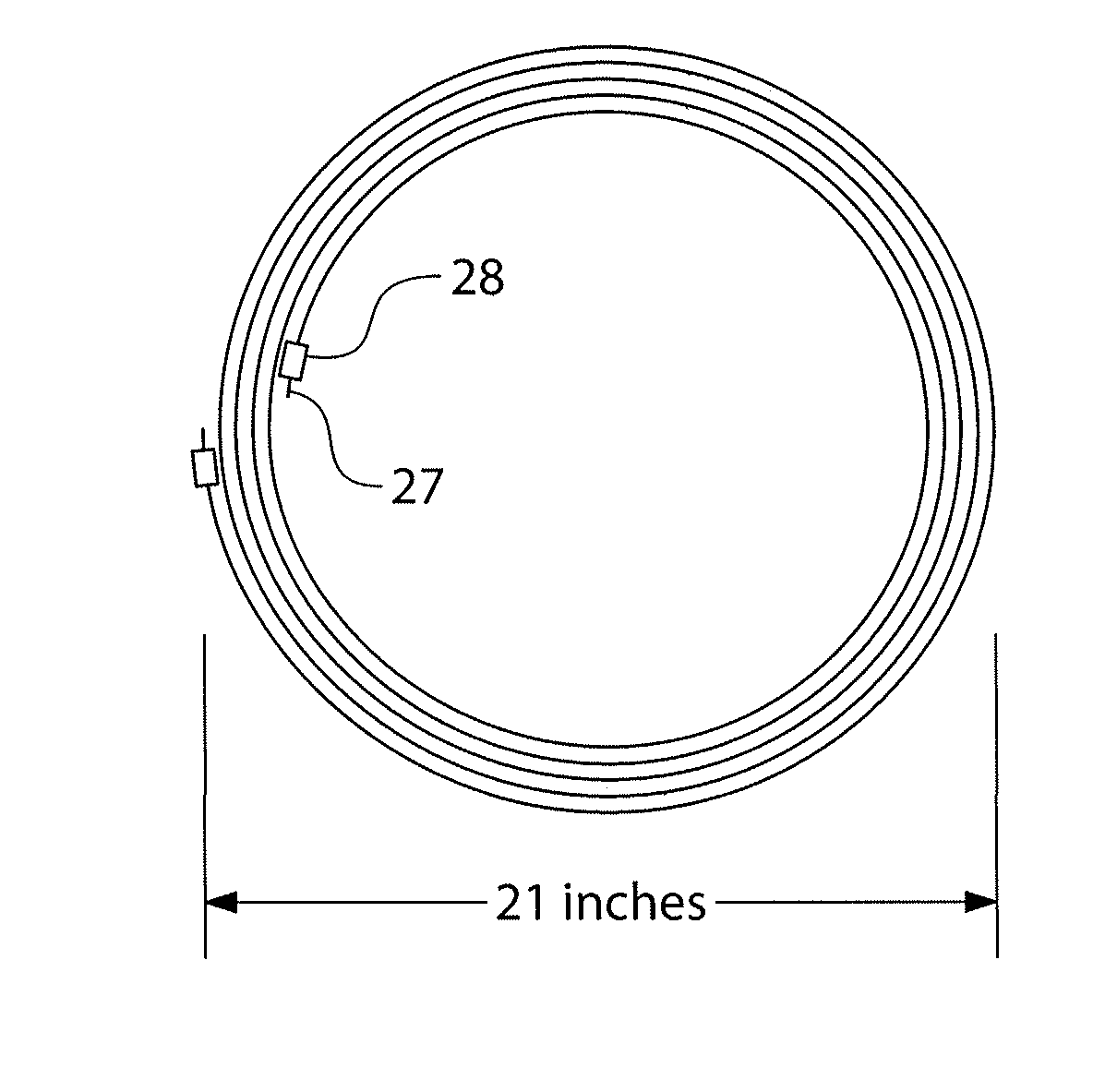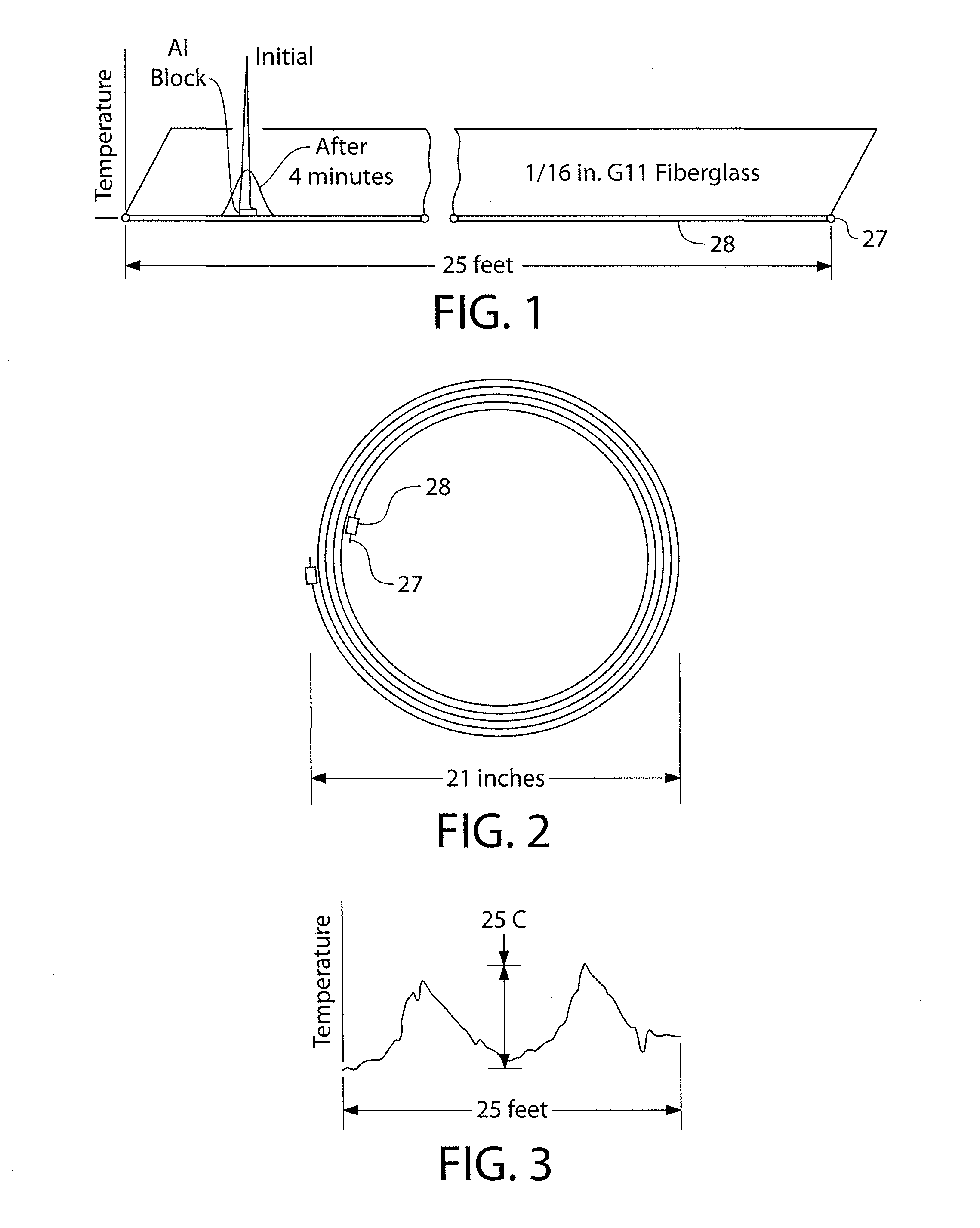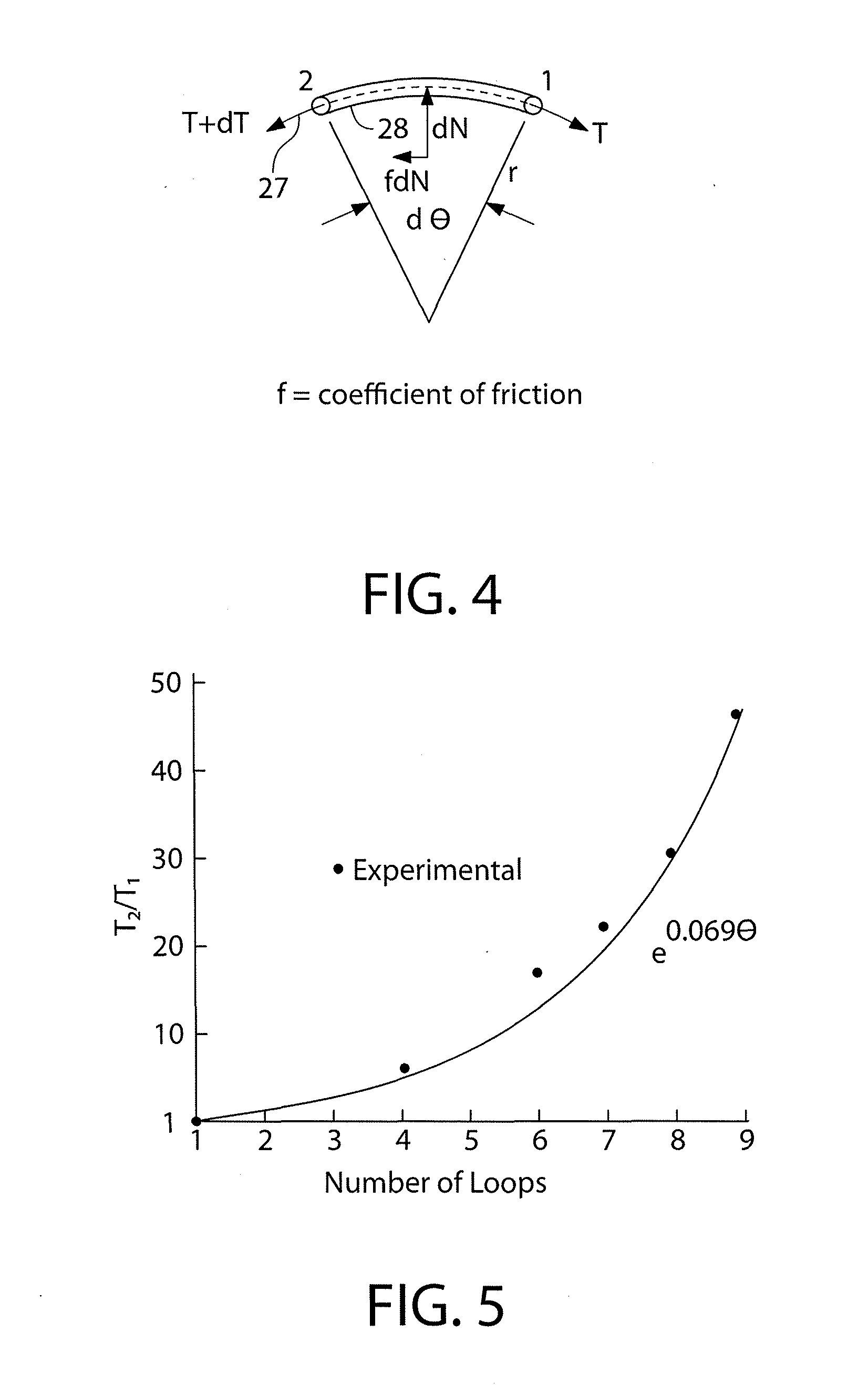Fiber Optic Sensor Thermally Matched Support Tubes for Distributed Fiber Optic Sensing
a fiber optic sensor and support tube technology, applied in the field of fiber optic sensors, can solve the problems of large differential expansion between optical fibers, too much insulation degradation, and limited ion release from these areas
- Summary
- Abstract
- Description
- Claims
- Application Information
AI Technical Summary
Benefits of technology
Problems solved by technology
Method used
Image
Examples
Embodiment Construction
[0056]Prior to proceeding to the more detailed description of the present invention, it should be noted that, for the sake of clarity and understanding, identical components which have identical functions have been identified with identical reference numerals throughout the several views illustrated in the drawing figures.
[0057]The present invention is illustrated and described in combination with a large AC electric generator, although it will be apparent to those skilled in the relevant art that the present invention may be applied to other devices or structures and as such should not be interpreted as a limiting factor of the distributed fiber optic sensor of the instant invention.
[0058]FIG. 12 shows a typical AC electric generator including the frame 1 within which is contained the stator core 2 integral electrically conductive windings showing the end regions 3 and rotor 4 Also shown are the parallel rings 5 which are connected to the main leads (typically six(6)) 6.
[0059]FIG. ...
PUM
| Property | Measurement | Unit |
|---|---|---|
| frequencies | aaaaa | aaaaa |
| voltage | aaaaa | aaaaa |
| length | aaaaa | aaaaa |
Abstract
Description
Claims
Application Information
 Login to View More
Login to View More - R&D
- Intellectual Property
- Life Sciences
- Materials
- Tech Scout
- Unparalleled Data Quality
- Higher Quality Content
- 60% Fewer Hallucinations
Browse by: Latest US Patents, China's latest patents, Technical Efficacy Thesaurus, Application Domain, Technology Topic, Popular Technical Reports.
© 2025 PatSnap. All rights reserved.Legal|Privacy policy|Modern Slavery Act Transparency Statement|Sitemap|About US| Contact US: help@patsnap.com



